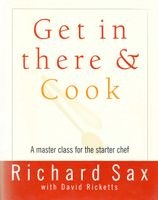🔥 Try our grilling cookbooks and save 25% on ckbk membership with code BBQ25 🔥
How to Read an Ingredient List, as Well as the Recipe
By Richard Sax
Published 1997
Now, go over the ingredient list. Pay attention not just to what the ingredient is, but take note of what’s done with it. Is it chopped, diced, smashed? How is it measured? You’ll find that “½ cup drained canned tomatoes, chopped” is not the same as “½ cup drained chopped canned tomatoes.” The latter is a little more dry than the first, making it more suitable for a sauté, where you don’t want a lot of excess moisture in the pan. “One-half cup toasted walnuts, chopped” is different from “½ cup chopped toasted walnuts”; the first measurement is a smaller quantity than the second, which could make a difference when baking a cake or bread. “One cup flour, sifted” is not “1 cup sifted flour”; the second measurement contains less flour than the first quantity, and that will make a difference in baking. “Prepared mustard” is the variety from ajar, while “dry mustard” is just that, a powder sprinkled from a jar or small can into a dish for a little piquancy. A recipe sometimes will not only specify quantity, but type, as with apples: 8 Cortland apples (about 3 pounds), peeled, cored, and sliced
Part of
Advertisement
Advertisement


